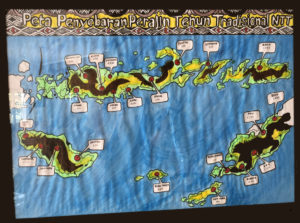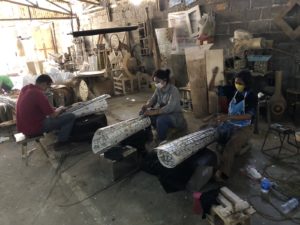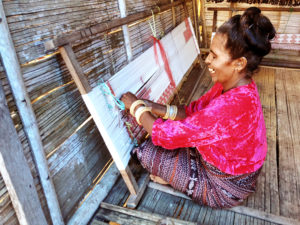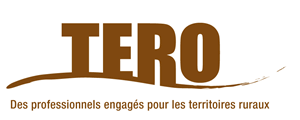This article gives a practical example of a value chain study conducted by Pierre Johnson, member of the International Value Links Association, and of its practical use. Value chain studies can highlight a variety of issues, on demand, such as: building a business case, identifying social or environmental issues and strategies to solve them, etc.
 From June to September 2018, I conducted a value chain analysis of the Home Decoration and Home Textiles (HDHT) sector in Indonesia on behalf of CBI, the Department of the Dutch Ministry of Economy for the development of SMEs in developing countries. The main objective was to assess if those two value chains were ready to export to Europe, and subsequently build a programme to assist SMEs and producers to do so. This project would also contribute to the further regional integration of Kalimantan, North Sumatra, and West/East Tenggara islands in the home decoration and home textile industry in Indonesia. For us, this was a great opportunity to discover the wonderful know-how and diverse craftmanship in different parts of the country.
From June to September 2018, I conducted a value chain analysis of the Home Decoration and Home Textiles (HDHT) sector in Indonesia on behalf of CBI, the Department of the Dutch Ministry of Economy for the development of SMEs in developing countries. The main objective was to assess if those two value chains were ready to export to Europe, and subsequently build a programme to assist SMEs and producers to do so. This project would also contribute to the further regional integration of Kalimantan, North Sumatra, and West/East Tenggara islands in the home decoration and home textile industry in Indonesia. For us, this was a great opportunity to discover the wonderful know-how and diverse craftmanship in different parts of the country.

While the markets represented by the Home Decoration value chain are mature, they have been rapidly evolving in the past decades through changes in lifestyles and fashion in the importing countries. They have become highly competitive, two factors which make more efficient management skills and market approach necessary for the persistence and growth of SMEs. Since the 1960s, Indonesia has developed this value chain as a flexible, complex and dense network of manufacturing companies, sub-contractors and home workers with manufacturing hubs in Java (Cirebon, Surabaya and Yogyakarta). With the recent and faster changes in market structure and dynamics, this network has proven less responsive than earlier to changes. Competitors such as China and Vietnam are taking important market shares, especially in the lower and mid-low end of the market. With its higher labour costs and skilled labour, Indonesia can only compete in the sector by targeting the higher ends of the market, through a combination of market intelligence, design efforts and sustainable partnership building within the national home decoration ecosystem of suppliers, sub-contractors, manufacturers and designers.
 Home textiles (HT) represent a more complex and diversified sector, from carpets to kitchen linen, bed wear to bathrobes. Difficult to apprehend as a whole, it is clearly growing also. With its rich and renowned traditions of hand-woven textiles, traditionally worn as sarongs or displayed in ceremonial occasions, Indonesia can clearly claim market shares for some of the subsectors in HT, matching to the technical features and decorative value of its weaving sector. Until recently, adaptations to the HT market have been limited and cautious. Traditional handicraft imposes its physical more than ethical limitations: hand-woven textiles sizes are limited by the size of looms, production is limited by the time necessary for weaving and by gathering, preparing and applying natural dyes. Those limitations make small pieces, such as cushion covers, spreads, runners and throws, more feasible than larger (bed covers or curtains for instance). However, sewing know-how is missing in the Nusa Tenggara Timor (NTT) islands to elaborate final contemporary HT products, such as cushion covers. The value of hand-weaving and meaningful patterns pinpoints the fact that HT from the NTT islands should be viewed as high-end or luxury products.
Home textiles (HT) represent a more complex and diversified sector, from carpets to kitchen linen, bed wear to bathrobes. Difficult to apprehend as a whole, it is clearly growing also. With its rich and renowned traditions of hand-woven textiles, traditionally worn as sarongs or displayed in ceremonial occasions, Indonesia can clearly claim market shares for some of the subsectors in HT, matching to the technical features and decorative value of its weaving sector. Until recently, adaptations to the HT market have been limited and cautious. Traditional handicraft imposes its physical more than ethical limitations: hand-woven textiles sizes are limited by the size of looms, production is limited by the time necessary for weaving and by gathering, preparing and applying natural dyes. Those limitations make small pieces, such as cushion covers, spreads, runners and throws, more feasible than larger (bed covers or curtains for instance). However, sewing know-how is missing in the Nusa Tenggara Timor (NTT) islands to elaborate final contemporary HT products, such as cushion covers. The value of hand-weaving and meaningful patterns pinpoints the fact that HT from the NTT islands should be viewed as high-end or luxury products.
In both value chains, building market intelligence and establishing efficient quality management systems are recommended strategies. Stakeholder dialogue is important for HD as well, and it will help define fair contracts relations and fair income for workers, which will be the first step for effective social responsibility within the sector. Companies have interest in proposing more attractive labour contracts, securing their workforce and encouraging skill and commitment. In the HT sector, reinforcing producer organisations is essential to consolidating this emergent value chain. To complete the latter and offer finished HT products to the market, it will be necessary to create more business alliances between those organisations and willing social entrepreneurs and/or designers.
One of the questions for this research was if a connection between natural fibres and sustainable textiles could be made, considering both as part as a single value chain, which would be named “sustainable design from Indonesia”. After a thorough analysis of both value chains, the answer of the VC study conducted by Pierre Johnson is rather clear-cut: Though some connections can be made, the two value chains have different history, dynamics and current needs. Their challenges can be expressed through identical categories (market approach, quality management), but the specificities those have in each value chain are different enough to justify their separation into two specific value chains with individual analysis and strategic design.
Extract from the Value Links Newsletter, November 2018
International Value Links Association
Complete report available online here on CBI Web site.



